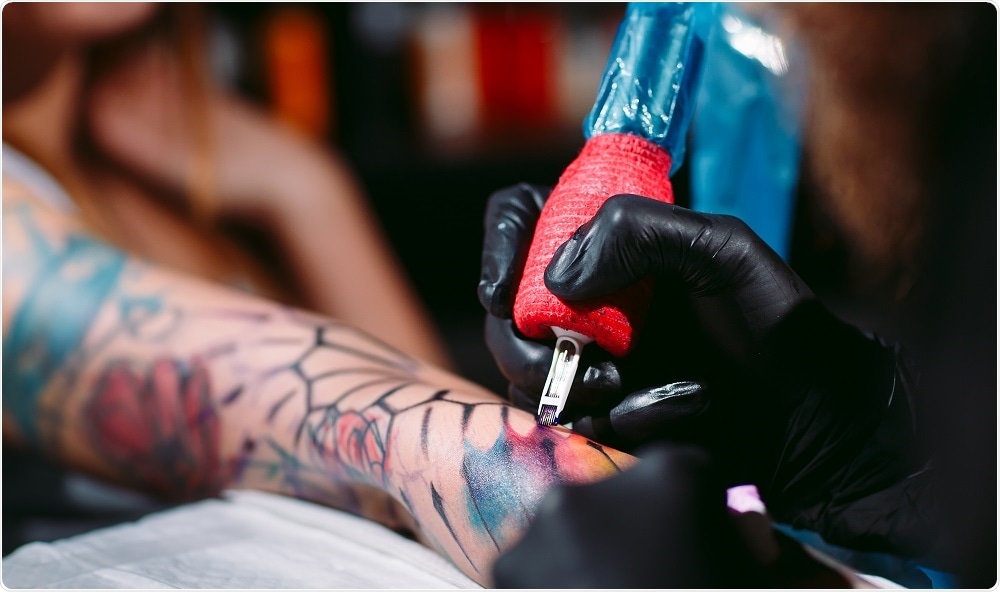Sep 13 2017
A study conducted by a team of scientists from Germany and the European Synchrotron Radiation Facility (ESRF), France, found that the elements which constitute the tattoos’ ink reach the lymph nodes by travelling inside the body in micro and nanoparticle forms.

© David Tadevosian / Shutterstock.com
The study, published in Scientific Reports yesterday provided the first analytical proofs of the transport of several toxicant element impurities, inorganic and organic pigments, as well as depth characterization of the pigments ex vivo in tattooed tissues for the first time.
In this breakthrough, two beamlines (experimental stations) of ESRF have been vital - ID21 and ID16B.
Hiram Castillo, an author of the study from the ESRF explained the necessity of checking the chemical composition of colors used while tattooing. "When someone wants to get a tattoo, they are often very careful in choosing a parlor where they use sterile needles that haven´t been used previously. No one checks the chemical composition of the colors”.
The fact is that the people have only limited knowledge on the possible impurities present in the color mixture used on the skin.
Tattoo inks, which are mostly made of organic pigments, sometimes also consist of preservatives and contaminants such as chromium, nickel, cobalt or manganese.
In addition to carbon black, titanium dioxide (TiO2) is the most commonly used component in tattoo inks. It is a white pigment used to create shades by mixing with colorants. TiO2 is also a widely used component in food additives, paints and sun screens.
Delayed healing accompanied with itching and skin elevations are mostly linked with white tattoos, which are thought to be a consequence of using TiO2.
The team that included scientists from the ESRF, Ludwig-Maximilians University, the German Federal Institute for Risk Assessment, and the Physikalisch-Technische Bundesanstalt has succeeded in locating TiO2 when it enters the tissue.
The potential threats of tattoos were previously investigated through in vitro chemical analysis of the inks and its degradation products.
Bernhard Hesse, one of the two lead authors of the study commented that through visual proof of the dyeing of the lymph nodes with the color of the tattoo, it was evident that the pigments from tattoos would travel to the lymph nodes. It was the body’s response in cleaning the spot of entrance of the tattoo.
However, it was unknown that it had travelled in a nano form, suggesting a behavior different from the particles at a micro level; as the way by which the nanoparticles react is not known, it might be problematic, he added.
Through X-ray fluorescence measurements on ID21, the team was able to locate TiO2 at the nano as well as micro range in the skin and the lymphatic environment. They identified a wide range of particles in the skin which were up to several micrometres in size. But, only nano particles were found to be transported to the lymph nodes. This might result in the chronic enlargement and lifelong exposure of the lymph node.
To evaluate the biomolecular changes happening in the tissues located near the tattoo particles, the researchers also used Fourier transform infrared spectroscopy.
Altogether, the team could report strong proof for both migration as well as long-term deposition of toxic particles and tattoo pigments in the human body. They also provided evidence for conformational modifications of biomolecules that might be associated with cutaneous inflammation and other dangers of tattooing.
After finding associations between structural and chemical properties of the pigments used in tattoos, the team aims to further analyze patient samples with adverse effects.